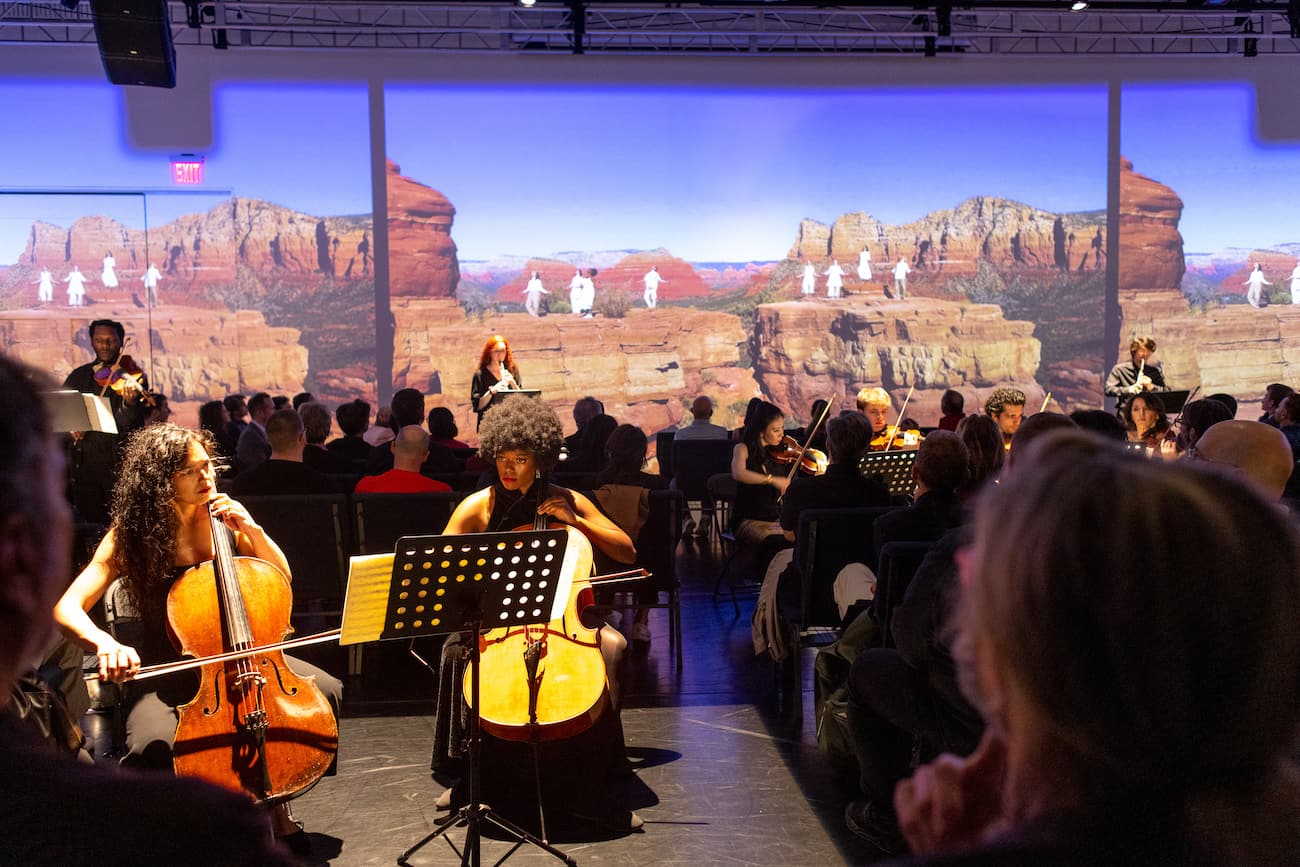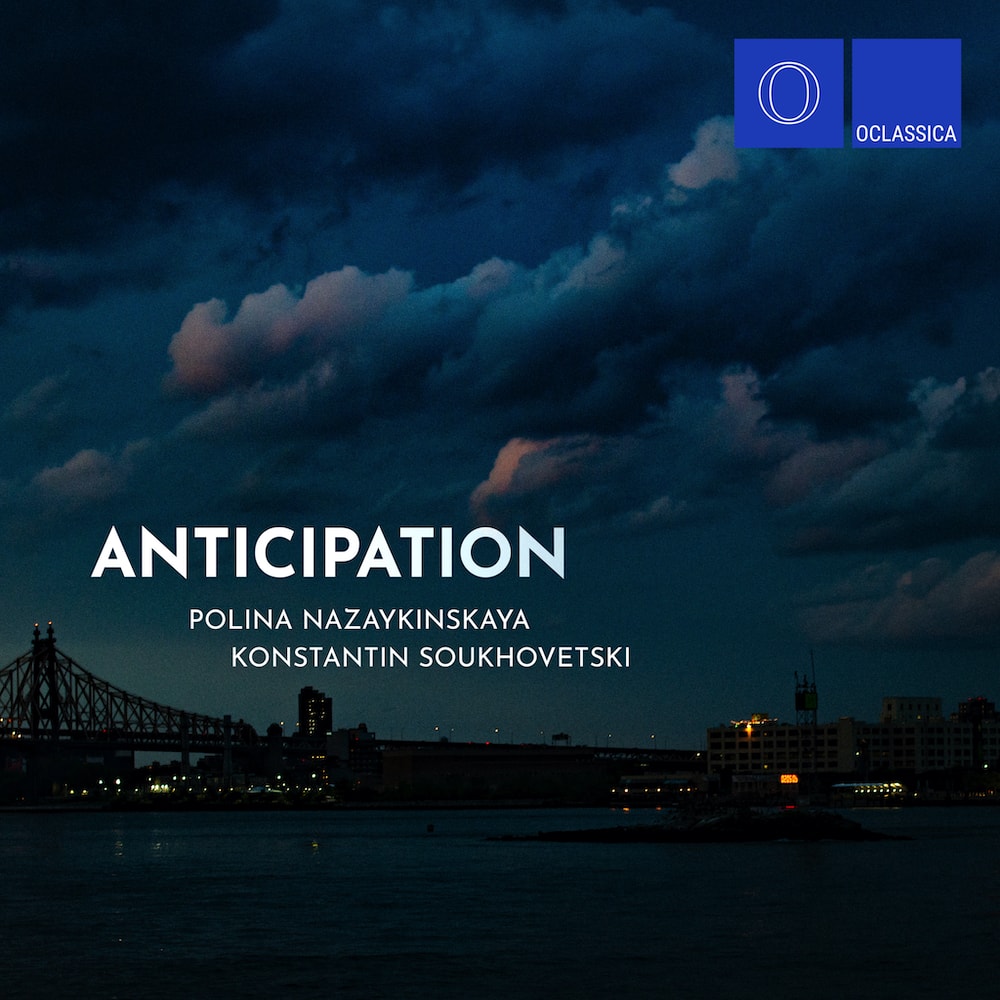
Oscar Wilde once remarked: “The stage is not merely the meeting place of all the arts, but it is also the return of art to life.” The inaugural presentation of the Site-Specific Dances company at the Paul Taylor Dance Studios in New York City offered a fresh vision of how technology, coupled with video installations, live music and dance could set the stage for redefining the boundaries between life and the classical arts. The creative minds behind the production, Michael Spencer Phillips, Dino Kiratzidis and Emma Kazaryan have raised the bar for live performance with their innovative and emotionally-charged immersive format.
A meticulously curated program consisted of seven pieces featuring video installations, live dance, original music, as well as a 21-person distributed chamber orchestra.

Darian Donovan Thomas, a Brooklyn-based avant-garde multi-instrumentalist and composer, opened the program with To/From. Thomas’ serene music preceded his emergence from backstage and quickly reached the audience’s hearts as the musician sauntered amidst audience members while playing the violin. A glimmering multimedia environment showed Phillips and Madison Falconer in a mysterious and powerful on-screen duet of sensual movements, an intricate mosaic of moving images.
The second piece featured a tour-de-force performance by a 21-member chamber orchestra playing Requiem, a composition by an award-winning composer Polina Nazaykinskaya, and the music director for the project. Moving yet stoic, the score emerged from silence with magnetic presence, accentuating the three dimensions of the performance space and mesmerizing the audience with an elegiac narrative. Site-Specific Dances’ video installation showed Phillips’ subtle choreography set against the backdrop of endangered redwood forests. The combination of three-dimensional dance video and immersive music created a unique experience.

“[It was] an intensely engaging set of musical meditations, rendered even more provocative through thoughtful pairings with landscape and dance,” said David Hirsch, a Senior Director of Educational Technology Strategy at Yale University, who came to see the show.
Rather than taking a central position, the chamber orchestra musicians were interspersed among the audience in mini-clusters. The novel configuration was a brilliant strategic move with an immense pay-off in terms of the quality of the sound and intimacy of the musical performance. At the helm of the orchestra stood David Hattner, a prominent conductor who is currently serving as the music director of the Portland Youth Philharmonic. Hattner’s immensely impressive skills were on full display as the charismatic maestro masterfully reinforced the synchronicity between the moving images of the projections and the scattered orchestra while bringing out the emotional complexity of each movement. “The month I had to prepare using actual video materials, as well as spending time with Polina’s score, was an important commitment,” said Hattner, “the actual coordination between video elements and live music left no room for errors.” And there were none, as the orchestra under Hattner’s direction delivered a well-balanced sound with an extraordinarily nuanced interpretation of the score.
The emotional response from the audience was palpable: “What struck me most was how seamlessly the production managed to combine technology and nature, meditativeness and dynamism, the sound of electronic music and classical acoustic instruments, the purity of the art form and social concerns — all in one,” said Julia Vasilenko, a concert pianist who was among the audience members.
Color: Orange for solo piano, written and performed by Konstantin Soukhovetski, a world-renowned pianist and composer, was next on the program. This masterful solo poured from the darkness of the space with the tender luminosity of a day’s first dawn. “Konstantin Soukhovetski’s kaleidoscopic polyphony was met with transparent lights and shadows which allowed the audience to soar,” said Llewellyn Sanchez-Werner, an award-winning pianist and audience member who attended the concert.
The fourth piece, Fenix, composed by Polina Nazaykinskaya, was one of the epic moments of the evening. Nazaykinskaya’s notes held no emotions back, conjuring a haunting melody that left the entire audience in awe. The symbolic narrative of the music was perfectly paired with Site-Specific Dances’ breathtaking video installation of dancers soaring amidst the majestic rock formations of Sedona. After the conclusion of Fenix the hall erupted with standing ovations.

The second act opened with Duet for Posthumans (Safe Space), a performance installation set to Safe Space, a song from Thomas’ upcoming album. Thomas’ transcendent performance merged seamlessly with Site-Specific Dances’ video installation, which juxtaposes an on-screen duet with a live duet choreographed by Phillips, offering an introspective reflection on the fragility of our environment.
Movement Bridge, set to music by Irish composer Emma O’Halloran was the fifth piece on the program. A “docu-dance media work” showed footage of community-based choreography and offered a glimpse into the lives of one of Northern Ireland’s communities, showing how community dance workshops can create conversations across generations and help to promote social integration between Catholics and Protestants. The unique cello timbre in Emma O’Halloran’s composition, coupled with curvaceous phrases created a primordial cadence, which simultaneously sounded ancient and novel.
The show ended with an energetic ensemble dance piece, Causeway, set to the driving rhythms of Dmitry Selipanov’s music. The spectacular dance sequence, choreographed by Phillips and performed by Tracy Dunbar, Ashley LaRosa, Jenny Hegarty-Freeman, and Charles Scheland transported the viewers to Giant’s Causeway, a UNESCO World Heritage site located in Northern Ireland. Composer Dmitry Selipanov’s electronic score utilized multiple percussion sets and synthesizers to create a futuristic soundscape. The music infused the choreography with mystic lyricism, as the dancers forged intricate figures that provided a dynamic contrast to the massive basalt columns of the Giant Causeway projected in the background.

The various disciplines represented in this unique collaboration contributed to the creation of an immersive world full of powerful storytelling, haunting imagery, and raw emotions. The inaugural performance of the Site-Specific Dances premiered on April 6, 2023, in New York City. To learn more about their next event, please visit their site sitespecificdances.com
Alexei Zelenev
Research scientist and a faculty member at the Yale School of Medicine


